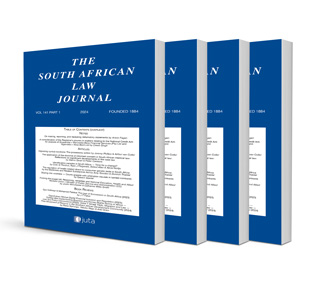
The Nairobi International Convention on the Removal of Wrecks, 2007: Sinking or Salvaging South Africa’s Wreck-Removal Legislation?
Authors Livashnee Naidoo
ISSN: 1996-2177
Affiliations: Attorney and Notary of the High Court of South Africa. Commonwealth Scholar and PhD candidate, University of Southampton. Lecturer in the Department of Commercial Law, University of Cape Town
Source: South African Law Journal, Volume 132 Issue 4, 2015, p. 849 – 874
Abstract
The Nairobi International Convention on the Removal of Wrecks, 2007, which entered into force in April 2015, is expected to fill a lacuna in international law by providing the first set of uniform international rules aimed at ensuring the effective removal of hazardous wrecks. The issue of wreck removal has become increasingly glaring, to the extent that the South African government has recently acceded to the Convention. This article will consider the extent to which the South African legislative framework on wreck removal is deficient, and to examine if certain of the Convention’s features could address the identified deficiencies in the South African legislative scheme. The core areas identified for reform in the South African legislative scheme are the lack of accountable ownership, insurance, and enforcement mechanisms. The Convention is able to address these deficiencies suitably through the provisions of inter alia strict liability, compulsory insurance and direct action. Yet the benefits of the Convention have to be balanced against the constraints imposed on an affected coastal state. Against this background, I submit that the Convention is able to augment meaningfully South Africa’s legislative scheme and the Convention should be adopted and given effect through a domestic enabling statute.